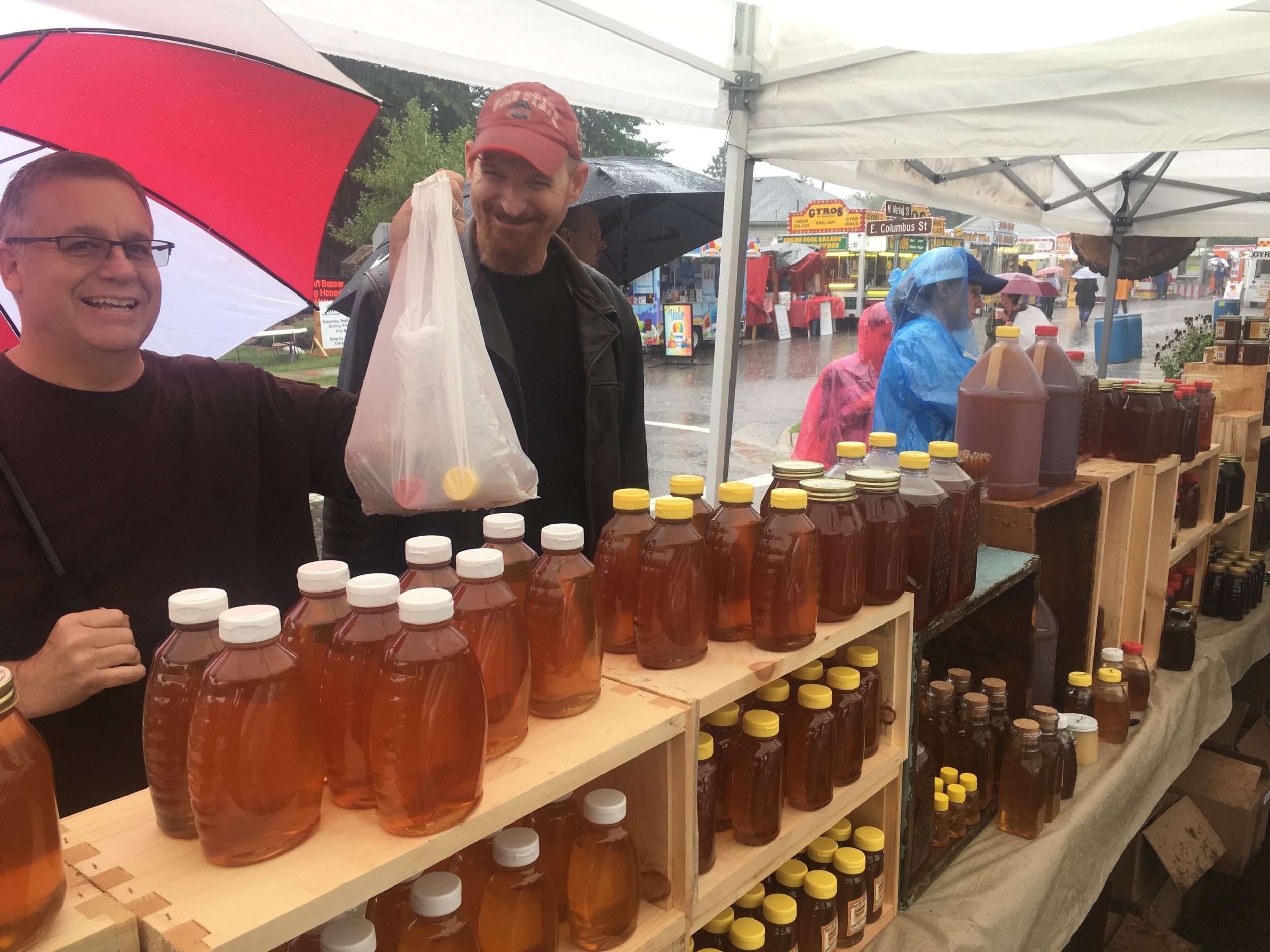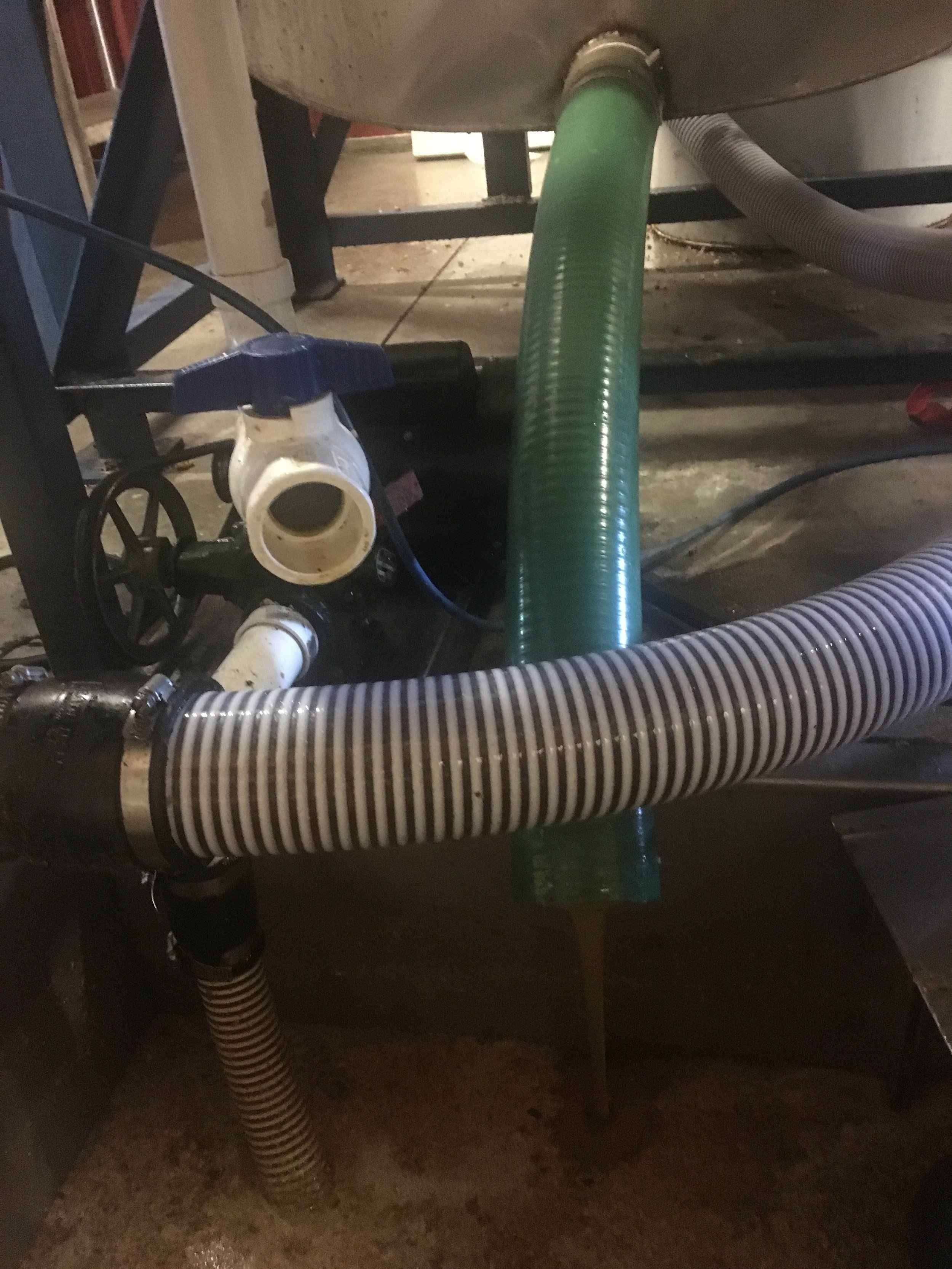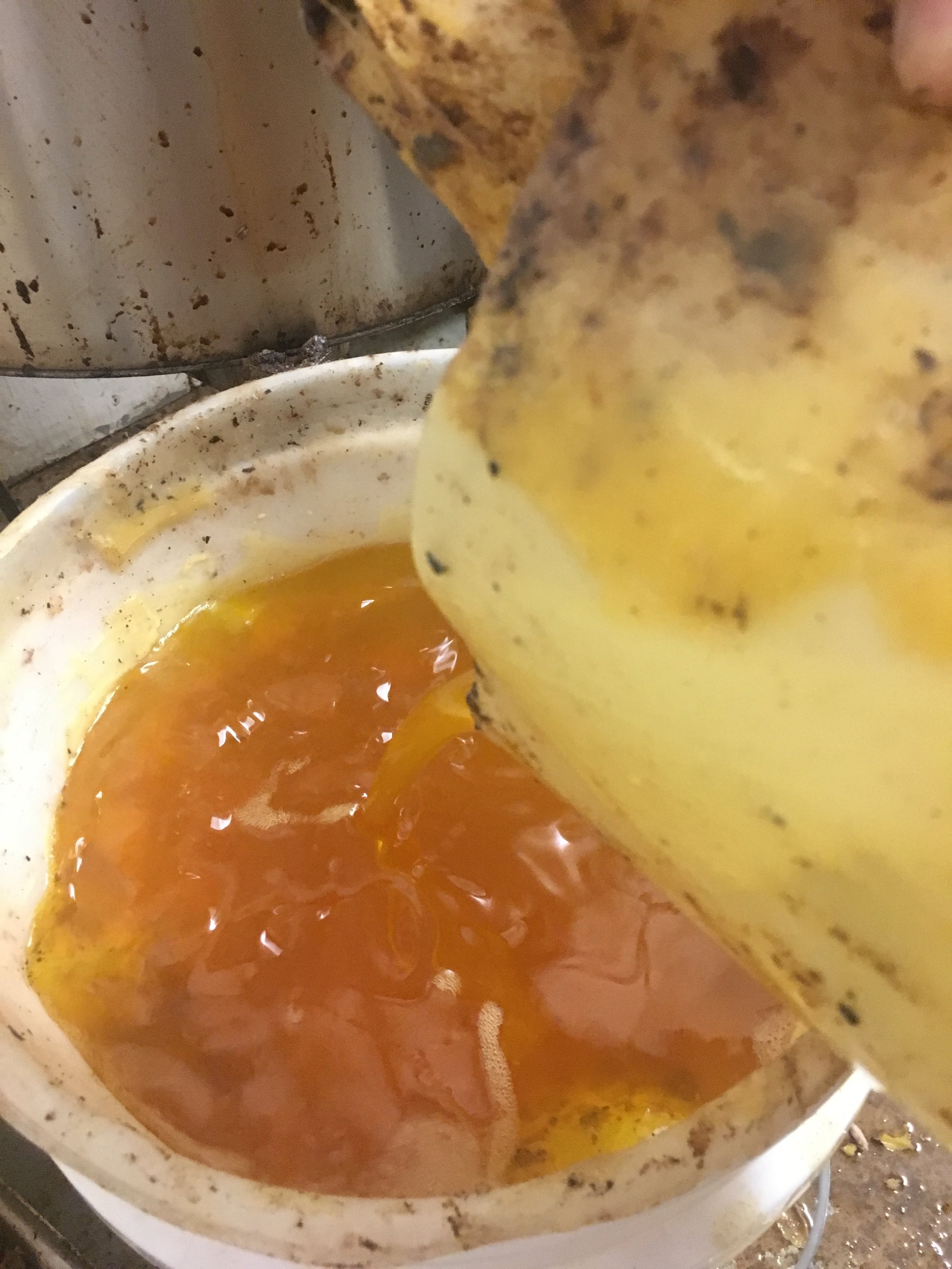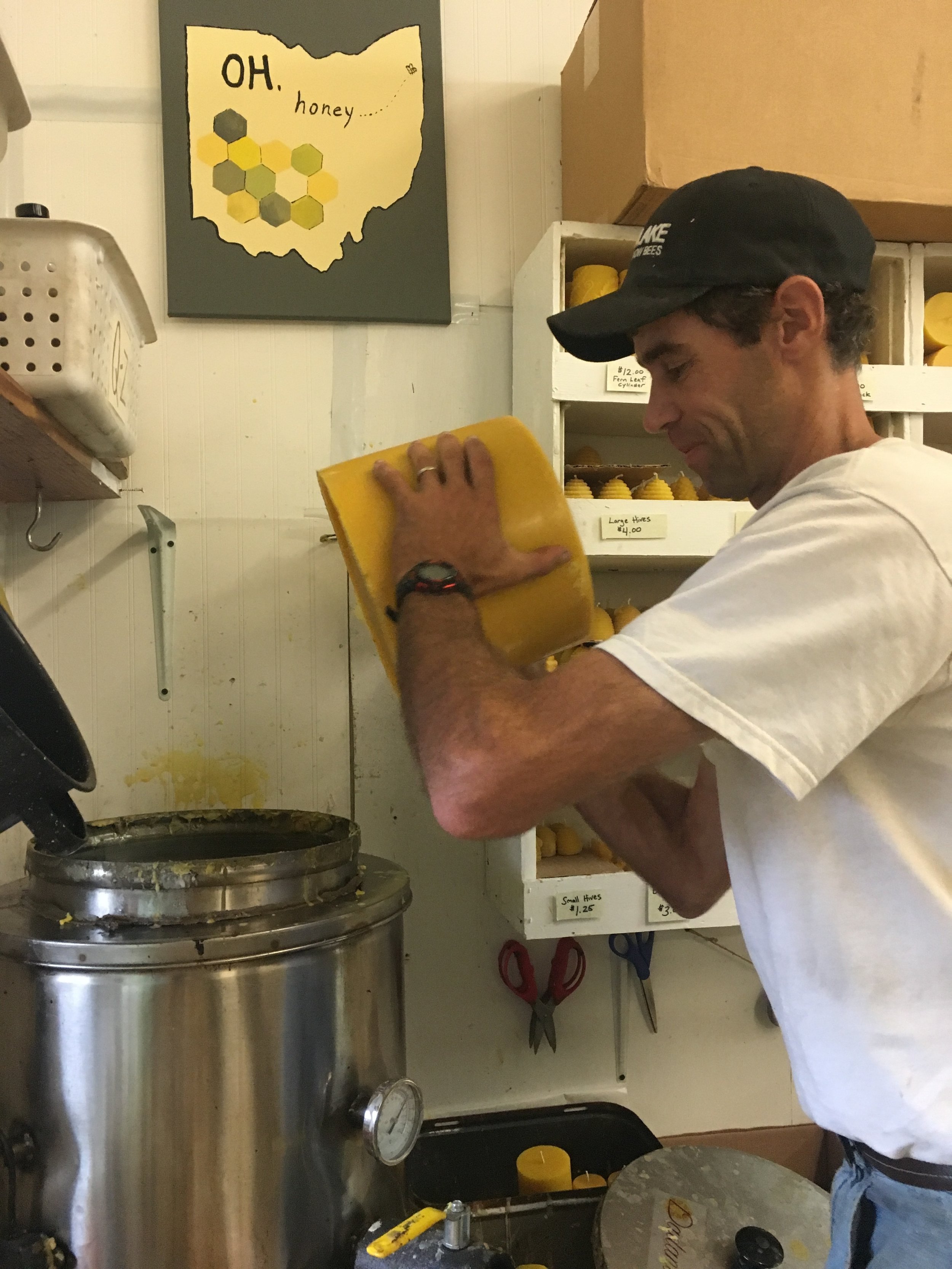Honeyfest Recap
Jayne Barnes
-Posted by Isaac
As you may well know, every year we do this little two day festival in Lithopolis.
The Honeyfest.
I think this was the 11th or 12th year. It's a small festival by Pumpkin Show standards, but it's still growing and pulling in thousands of people. Honey lovers. For the beekeepers around here, it's our biggest weekend of the year.
Jayne is the mastermind behind our setup.
We're right in front of the Scioto Valley Beekeepers honey extraction building. New this year: the bee mural. For two days we got to admire this awesome work of art.
And we're just down the road from the bee tent. Barry Conrad and his bee beards are a staple of the festival.
As usual, he's got a beautiful girl at his side. This year's American Honey Princess is the highly captivating Jenny Gross from Wisconsin. We listened to her entertain, teach, demonstrate, and basically promote honey bees all during the festival.
Some come for the honey bee education, most come to stock up on honey. As you might imagine, you can find all kinds and sizes. Even some speciality honey.
Our friends, Dan and Cortney Williams were set up for the first time this year. Dan specializes in queen production but as you can see, they also know a thing or two about honey production.
New beekeepers bring new ideas. Dan's brainchild: using gallons of honey as tent weights.
As it turned out, those tent weights were needed. This year's Honeyfest started as usual, a beautiful warm Friday afternoon...
...then the clouds... then the wind ....and by Saturday morning, the scene had very much dampened.
And that became the main story of the 2018 Honeyfest. The rain.
Unceasing, unrelenting rain from start to finish. We all took a good drenching.
But spirits remained high. Unbelievably, the honey lovers still came out.
What has always proved to be our biggest day of the year will once again be just that. Unbelievable! A little wetness wasn't going to stop our loyal honey fans. Thank you guys!
It's now Monday morning and we begin to dry out.
I've got bees to think about, Jayne's got orders to fill, and the kids have school. Back to normal. We carry the memories of a wet but awesome weekend.
Some of us even have bragging rights. I'm pretty sure that by now, the entire third grade knows all about Maizy's first place in the Junior division Honeyfest photo contest.
We'll see her genius on display in next year's COBA calendar.





















































